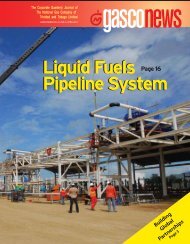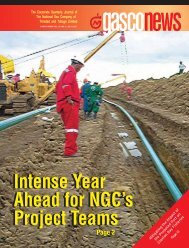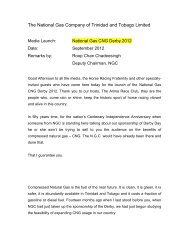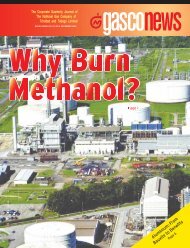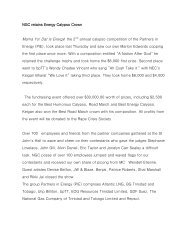June 2012 ISSN 2070-4593 - NGC
June 2012 ISSN 2070-4593 - NGC
June 2012 ISSN 2070-4593 - NGC
You also want an ePaper? Increase the reach of your titles
YUMPU automatically turns print PDFs into web optimized ePapers that Google loves.
Access to<br />
natural<br />
resources such<br />
as land, water<br />
or forests — is<br />
essential for the<br />
2.5 billion<br />
people who<br />
produce food<br />
for their own<br />
consumption<br />
and income.<br />
The farmers who<br />
operate the 500<br />
million small farms in<br />
developing countries face<br />
various resource limitations<br />
resulting in insufficient access<br />
to food and nutrition. They need clear<br />
tenure rights to promote equitable access to<br />
and sustainable management of resources<br />
like land and water.<br />
Towards sustainable food production<br />
and consumption systems<br />
Food consumption and production systems<br />
must achieve more with less. On the<br />
consumption side, we need to shift to<br />
nutritious diets with a smaller environmental<br />
footprint, and reduce food losses and waste<br />
throughout the food system.<br />
FAO estimates that global food losses<br />
and waste amount to 1.3 billion tonnes per<br />
year — roughly one-third of the world food<br />
production for human consumption — and<br />
correspond to more than 10 percent of the<br />
world’s total caloric energy consumption.<br />
On the production side, soil, water<br />
and nutrient depletion, greenhouse gas<br />
emissions, pollution and the degradation of<br />
natural ecosystems must be targeted, the<br />
report said. Benefits provided by nature such<br />
as clean air and water (ecosystem services)<br />
need to be protected and harnessed to<br />
achieve sustainable growth.<br />
More with less<br />
Agriculture must produce<br />
more food but with<br />
fewer resources like<br />
energy and water.<br />
FAO is promoting<br />
an eco-system<br />
approach called<br />
Save and Grow to<br />
agriculture that<br />
draws on nature’s<br />
contribution to<br />
agricultural growth,<br />
for example, soil<br />
organic matter, water<br />
flow regulation, pollination<br />
and natural predation of<br />
pests — and applies appropriate<br />
external inputs at the right time and in<br />
the right amount to improved crop varieties<br />
that are resilient to climate change and use<br />
nutrients, water and external inputs more<br />
efficiently.<br />
Feeding 9 billion people<br />
In 2050 there will be an expected global<br />
population of 9 billion, with increased incomes<br />
and rising food demand.<br />
Pressure on the world’s agricultural and<br />
food systems and the resources they use<br />
will grow. Worse, unless purposeful action is<br />
taken, the increase in food production of 60<br />
percent needed to meet effective demand will<br />
still leave behind over 300 million people who<br />
are expected to suffer from chronic hunger<br />
in 2050 because they will remain without the<br />
means to access food.<br />
The only way to ensure their food security<br />
is by creating decent jobs, paying better<br />
wages, giving them access to productive<br />
assets and distributing income in a more<br />
equitable way.<br />
<strong>June</strong> <strong>2012</strong> Earth Conscious 33



